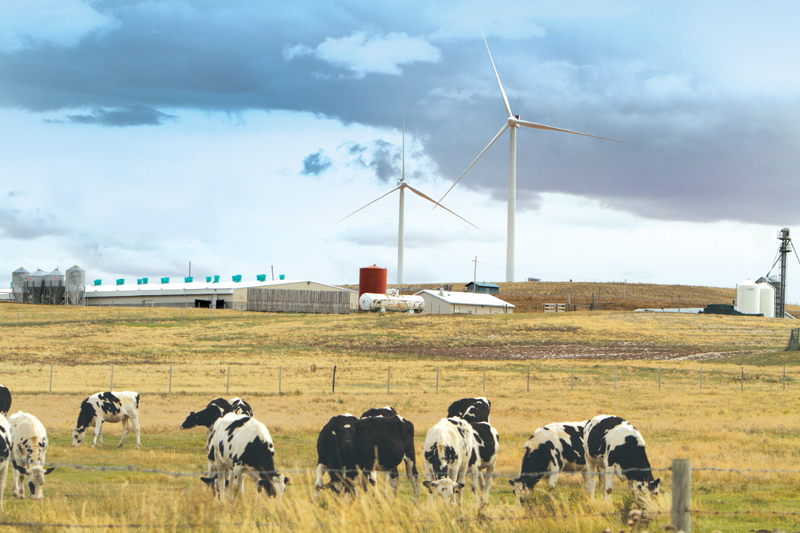At a national level, when Canada is compared to other countries, the renewable energy forecast appears to predict a safe, steady increase in capacity. However, when the national aggregate veneer is peeled away, a collection of mostly “first-turn” markets appear which are each facing unique challenges. Our experience from mature markets (those markets having been through multiple “turns”) recognizes the need for collaboration across all market stakeholders, learning the lessons of the past, and learning from other markets, to create a locally made solution.
Below are 10 suggestions that Canadian markets could consider to further renewable energy and capitalize on the gains made to date. In reality, the progression of the market will likely need a combination of many of these, and other developments to move beyond the currently anticipated valley.
1. National Coordination: With aspirations of being an energy superpower, Canada maintains multiple smaller energy markets across the provinces and territories. Increased regional or national-level coordination could, for example, allow for better allocation of resources and help lower reserve capacity requirements in each province, contributing to lower electricity bills for consumers. Transmission costs notwithstanding, EY continues to echo recent calls for better coordination between provinces. Manitoba’s 2011 agreement with Minnesota is an example of cross-border cooperation to mutually serve two distinct markets.
2. Transparency: The energy system in Canada remains complex and presents a comprehension challenge for all but the most experienced ratepayers. Multiple layers of governance, rules, subsidies, exceptions, and allowances in the energy system render a fair comparison of different energy sources as much an art as a science for many, and importantly can prevent rational decision making. Increasing transparency for cost and process can only help to provide an increasingly stable platform for future energy discussions and planning.
3. Energy Efficiency: Increasingly, across Canada, regulators are becoming concerned about rate increases and often rejecting rate increase requests from utilities. Energy efficiency is well placed to offer a viable solution, being the lowest-cost approach to meeting customer demand. However, traditional energy efficiency approaches have often provided utilities with a business model conflict, where traditional utility business models are based on selling [an increasing] amount of electricity, while energy efficiency requirements aim at reducing this. Some highly progressive utilities have recognized the opportunity of energy efficiency, which requires a business model change, and have become energy services providers and made up lost electricity sale revenue. Despite the required change, utilities remain best placed to implement energy efficiency measures. Utilities should be encouraged to embrace energy efficiency as a route to diversification, with the initial focus on proving the business case for involvement.
4. Net Metering: Across Canada, and especially in Ontario, developers are beginning to consider how to deploy projects with minimal or (preferably) no subsidy mechanism. Net metering is one procurement mechanism that supports the democratization of power, allowing individual residents and businesses to generate their own energy, selling any excess, and buying any shortfall. In the absence of calls for projects by utilities, net-metering-style contracting can allow project development to continue and can often reduce transmission loads at peak times.
5. All Energy Needs: To date, focus across Canada and globally has been on introducing renewable sources for electricity generation, with significantly lower emphasis placed on renewable heating and renewable transport fuels. The development of a sustainable society requires renewable energy to encompass all three energy uses, which is especially true in Canada, where approximately two-thirds of our energy is used for heating. Future policy should pause to broaden the focus to include all energy needs.
6. Domestic Benefits: The history of markets successfully locking in additional domestic benefits from renewable energy has varied greatly. Domestic benefits can include local employment or exportable skills and are considered to be beyond the inherent benefits from renewable energy, which include sustainable generation, reduced/eliminated fuel price risk, environmental benefits, or distributed benefits.
The Ontario market is currently evolving following an adverse World Trade Organization ruling on the domestic content, while Quebec continues to enjoy contract-required employment in the Gaspé Region.
Our view is that additional domestic benefits can be important to a local market and shouldn’t be given up easily. These benefits have been able to be retained by those markets embracing sustainability, by placing environmental policy first and industrial policy second (even if the results are the same). Those markets seeking to retain additional domestic benefits should consider the intent of any new program and how this aligns with long-term sustainability goals.
7. Energy Storage: Portable, cheap, and reliable energy storage has the potential to drive a paradigm shift in energy use and management. While regarded as being at an early stage, Canada has been storing energy in hydro form for more than 100 years and understands the benefits this can bring. Future energy policy encouraging the use of energy storage and innovation in the sector could propel Canada forward on the international stage while benefitting national energy interest.
8. Inherent Resilience: Recent flooding in Calgary, Toronto, and New Brunswick highlighted the vulnerability of our infrastructure to changes in climate and weather patterns. Renewable energy is inherently a distributed generation solution and can often be generated on site, providing an energy network with an inherent resilience to disasters in a specific area. As the level of carbon in our atmosphere continues to increase (carbon dioxide in the atmosphere exceeded 400 parts per million in May 2013 at a Hawaii measuring station, and Arctic-based measurements exceeded 400 parts per million on average for all of May 2012), the recent weather events are forecast to increase in frequency and severity. Renewable energy can offer an increased resilience to the impacts, while helping to reduce the amount of carbon entering the atmosphere.
9. Water Impact: Canada has an abundance of available fresh water and an equally high rate of water consumption. As the climate alters, both domestic and industry users are likely to face increased water pressures, providing a further benefit to many renewable energy generation technologies that consume little-to-no water through generation. The impact on our water supplies may become critical, and policy could start considering the level of water use through a generation station’s supply chain and production life when considering which generation sources to pursue.
10. Extractives: Canada is blessed with significant natural resources. While extensive efforts are being made to make use of these resources, global extraction methods are being placed under increased scrutiny for a plethora of reasons, sustainability is just one. Already underway, the extractives industry has the potential to employ renewable energy technologies without the need for government support for projects where the cost of a renewable energy facility is often immaterial when compared to the overall project cost and where the inclusion of renewable energy helps to reduce a significant business risk—fuel supply.
A role for government, if seeking to enhance the sustainability of its extraction industries, could be to work with project developers to understand how renewables can make a difference and increase Canada’s reputation as a centre of extraction excellence.
The Future of Renewables
Getting across the valley to a better future is not going to be an easy task. Industry must work with policy makers and consider solutions for the future, not simply repeat the past. Enabling policy can often be as effective at stimulating a market as the provision of subsidies. The concepts discussed here are individual perspectives on a complex issue, which needs careful thought and an understanding of the impact to all stakeholders.
Steve Lewis is a partner and senior VP and Mark Porter is a senior associate with EY Canada’s Renewable Energy Advisory.
















